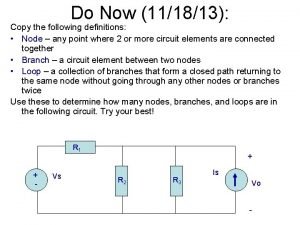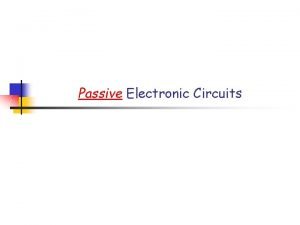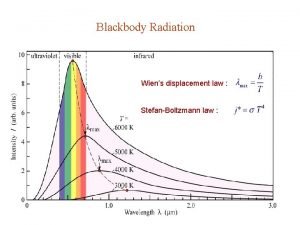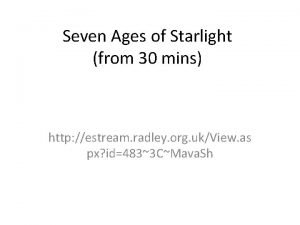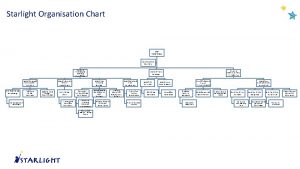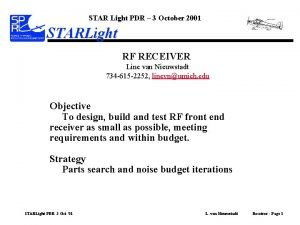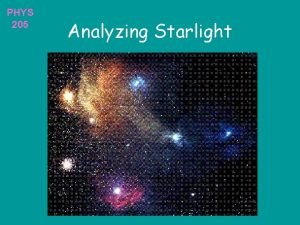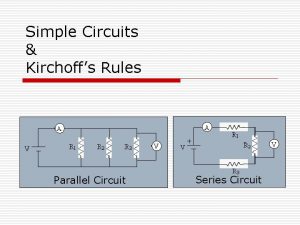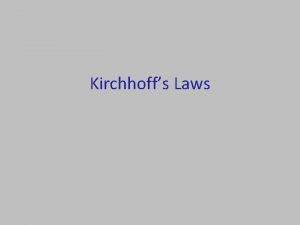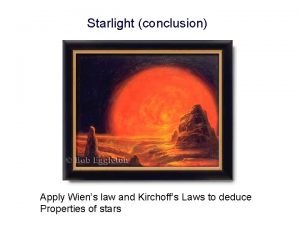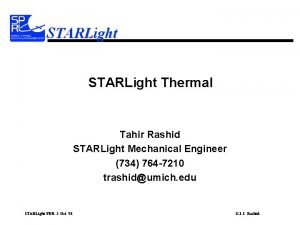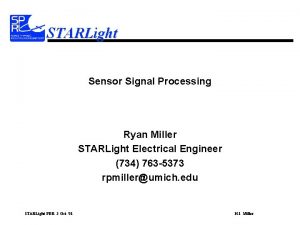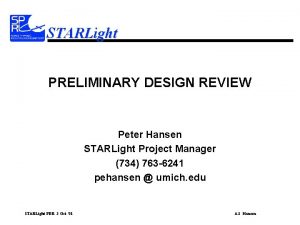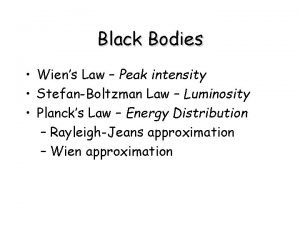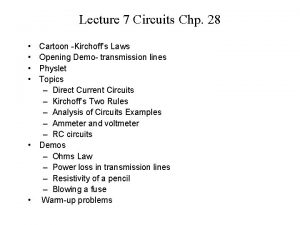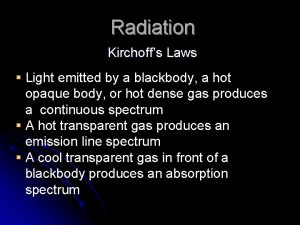Starlight conclusion Apply Wiens law and Kirchoffs Laws















- Slides: 15

Starlight (conclusion) Apply Wien’s law and Kirchoff’s Laws to deduce Properties of stars

Kirchoff’s First Law + Wien’s Law • Hot, opaque objects produce continuous spectrum • The hotter the object, the bluer it is • Wien’s Law lmax = 2. 9 E-03/T • The hotter an object, the brighter it is Demo

Kirchoff’s First Law + Wien’s Law

Kirchoff’s 2 nd Law: Emission Line Spectra Wavelengths of emission lines unique “fingerprint” of element

Kirchoff’s Third Law: Absorption Spectra See Figure 16. 6

Starlight…application of spectroscopy to stars • Continuous spectrum gives surface temperature (Wien’s Law) • Spectral lines give chemical composition, temperature (also), speed of rotation (How? ) and other properties • Examples of stellar spectra (Figure 16. 11)…what can we say?

Spectral classes of stars: O, B, A, F, G, K, M What can you say about the temperatures of these stars?

Examples of stellar spectra Question: apply Wien’s Law to the O 5 star. What Can you say about its Temperature (relative to the Sun? )

With information provided by spectroscopy, we can search for correlations between stellar properties

What the data show: the Hertzsprung. Russell Diagram Highest quality data from the Hipparchos spacecraft

The Hertzsprung-Russell Diagram and the Types of Stars • • • See Figure 16. 19 Types of stars, important terms Main Sequence Giants Supergiants White dwarfs What does it all mean?

The Hertzsprung-Russell Diagram

Understanding the Main Sequence (stars like the Sun) • A statistical argument (no physics) • Physical argument 1: what holds stars up? • Physical argument 2: what powers the stars (where do they get their energy supply? )

The nature of the Main Sequence #1: the MS as a Cambus Stop Many more people seen on the sidewalk near a Cambus stop than a random point

The Main Sequence is a long-lived phase of stellar evolution. Stars spend a much longer time here than in other parts of the HR diagram
 Kirchoffs current law
Kirchoffs current law Kirchoffs current law
Kirchoffs current law Kirchoffs current law
Kirchoffs current law Kirchoffs loop law
Kirchoffs loop law Electric circuit definition
Electric circuit definition Boltzman law
Boltzman law How to calculate the schwarzschild radius
How to calculate the schwarzschild radius Starlight assistant
Starlight assistant Rf starlight
Rf starlight Analyzing starlight
Analyzing starlight Starlight italia
Starlight italia Cross apply vs outer apply
Cross apply vs outer apply Series circuit rules
Series circuit rules Kirchoffs rules
Kirchoffs rules Kirchoff junction rule
Kirchoff junction rule Administrative laws driving
Administrative laws driving
